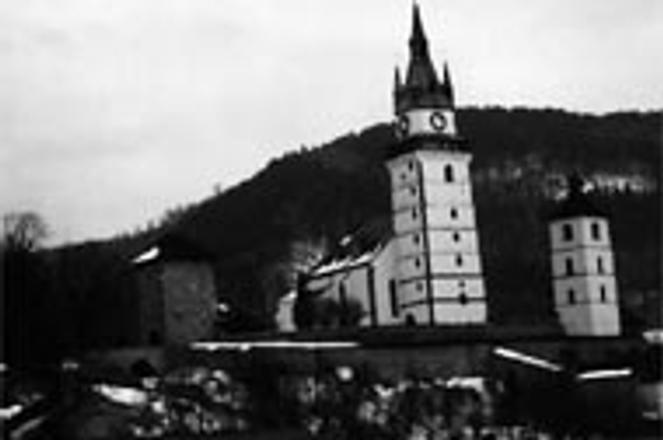Every central European country has a town like Kremnica. The Czechs have Telč, the Hungarians Eger, and the Romanians Brašov. A medieval mining bastion whose repute for beauty has weathered the passing centuries as well as her walls.
Living in cosmopolitan Bratislava, it is simple to lose sight of the rustic mountain heritage dominant throughout much of Slovakia. A folk culture characterized by church bells echoing through deep valleys and evenings spent with friends at a salaš (shepherd's cottage) as opposed to frequenting Gaelic watering holes followed by late-night fast-food runs. But is this hearty culture still breathing or has it been relegated to the dusty pages of ethnographic coffee-table books?
To find out was the charge put to me when writing a travel story about the central Slovak town of Kremnica. I put the additional task upon myself to write a piece pertaining to a historic Slovak town without mentioning either Neolithic finds in the region or the year free royal status was granted by the Hungarian crown. A difficult assignment indeed.
Journey
The quest for this historic heart of central Europe began at the Bratislava bus station (there are no direct trains). Soon after leaving the industrial sprawl of the capital behind, the flatlands of lower Slovakia spread out in all directions. After Nitra, the land began to roll and in the distance the uniform expanse of collectivized farms began to give way to stands of hardwoods.
The road shifted around a few, sliced through another one then descended into the Hron river valley. Heading north along the banks of the rushing river, the hills grew larger and the towns grew older. It was as if the 20th century found it difficult to navigate the twisting valley.
After a missed bus connection in Žiar nad Hronom, a chilly sunset, and a warm conversation with a babka (old woman), I arrived at my destination. Maybe the missed afternoon bus was secretly a blessing because Kremnica wears her best face at night.
The illuminated town wall (parts of which date from the 15th century), standing starkly above the dimly lit streets is dominated in the lower town by the Barbican. The cobblestone path going under this gate leads to the protected town center, home to over four dozen well appointed late gothic and renaissance dwellings.
Several of these gabled structures surround the steep town square. The 15th century town hall is the prevalent building on the upper side of the square while the plague column, dating from 1765, is the focal point of the lower half. Unfortunately, this monument has been hidden under wooden scaffolding for the past two years. If any doubt remained about the prosperity of this medieval mining center it disappears when seeing the majestic town castle soaring high above the square bathed in white light. Clearly Kremnica was a town of means.
Fort Knox
Tower from a golden past. The spire from St. Catherine's Church is a real symbol of Kremnica's prosperity when it was the center of gold mining in Europe in the 14th century.Daniel J. Stoll
Kremnica was the Hungarian Fort Knox. The combination of gold-filled hills and the German miners that it lured created a money-making machine that caused the king of Hungary in the year 1328 to É.never mind.
Today the mining heritage lives on at the still operating Slovak Mint at the north end of the square which used to be called "The Old Crusher." An unabridged version of Kremnica's mining past can be unearthed at the coins and medals museum located at the south end of the square. Unless you are a coin collector skip the museum.
During daylight hours the town reveals her position tucked high in a valley near the crest of Kremnické vrchy. Climb the church tower for a view of the landscape which is worth staying up in the tower for a while. If you are in Kremnica on a Sunday morning, climb the wooden steps from the square up to the church and be prepared to be blown away by the church's new 3,500 pipe organ.
On winter weekends, the locals hit the slopes at the settlements of Krahule and Skalka above town. The hills also have extensive cross-country ski trails and a few restaurants serving up traditional mountain recipes.
The spa town of Turčianske Teplice is just over the saddle in the Turiec valley awaiting to indulge the weary sportsman or sightseer.
For those hoping to disappear for a while from the fast-paced life of the late 20th century, a relaxing stroll through Kremnica's narrow streets will remind you what central European life must have been like before the advent of concrete housing and cellular phones. And even if the where- abouts of neolithic men remain a mystery throughout your stay, you surely won't go away disappointed, regardless of the season.
Daniel J. Stoll contributed to this story.
Author: Robbie Morrison


